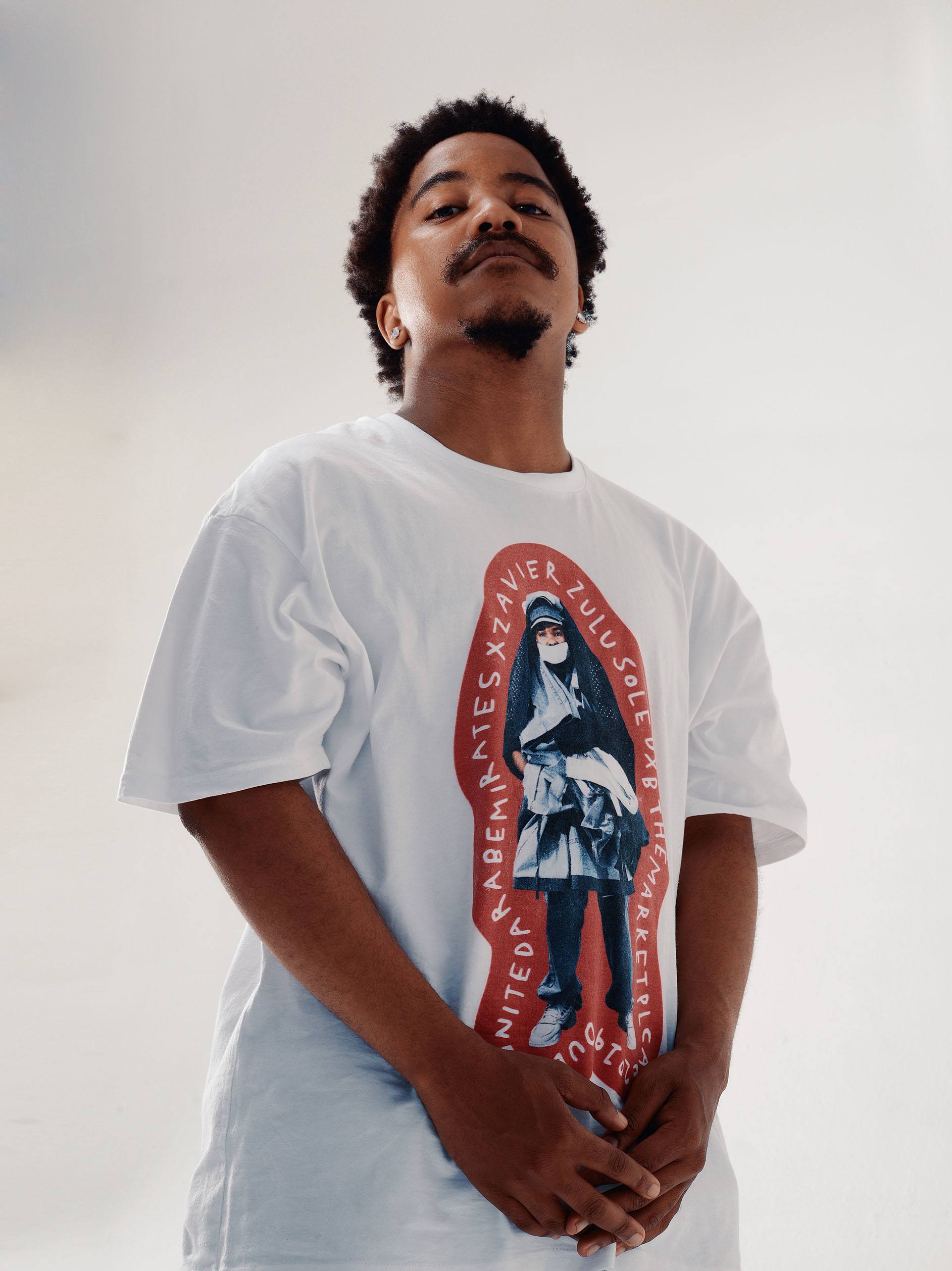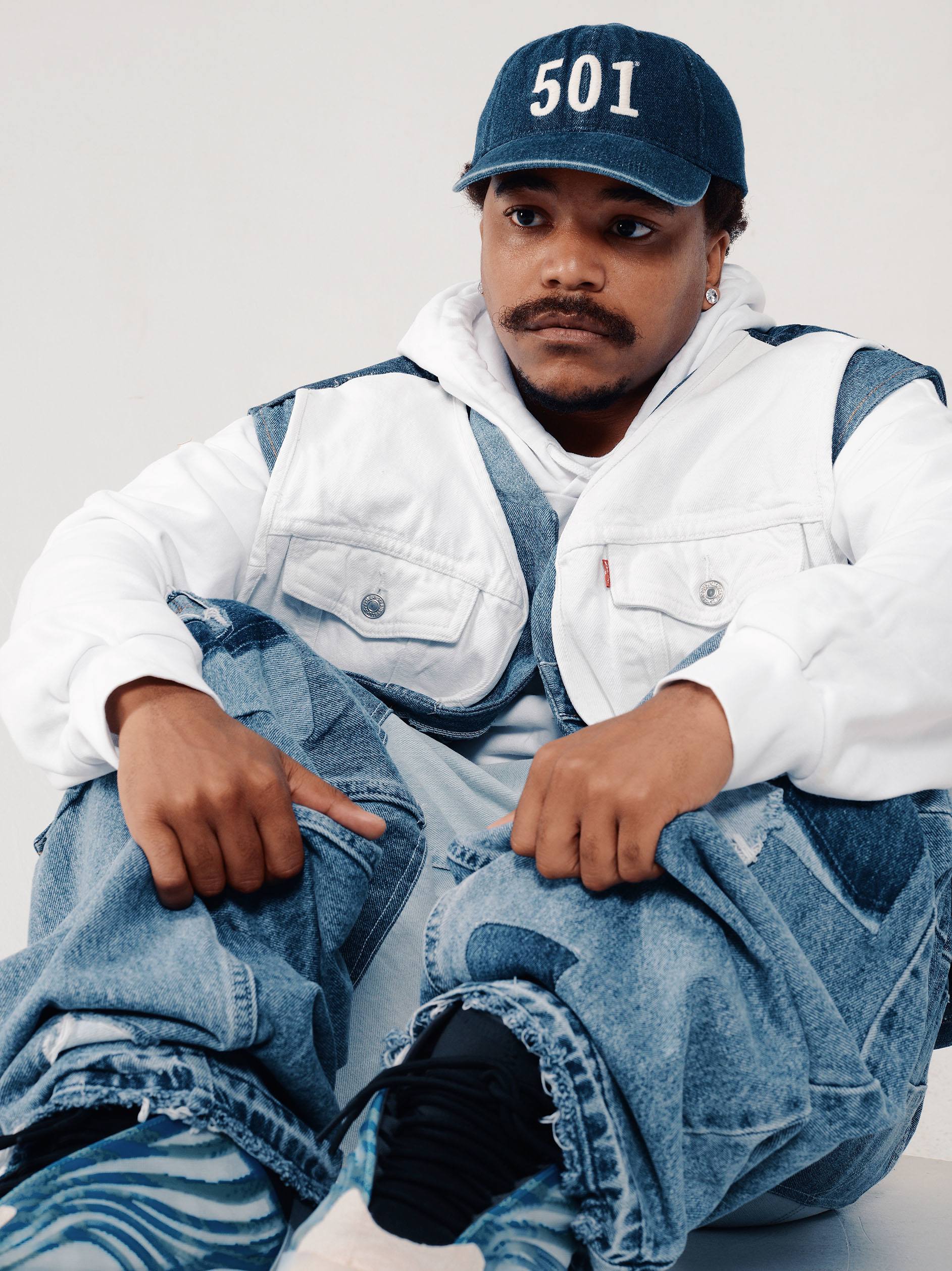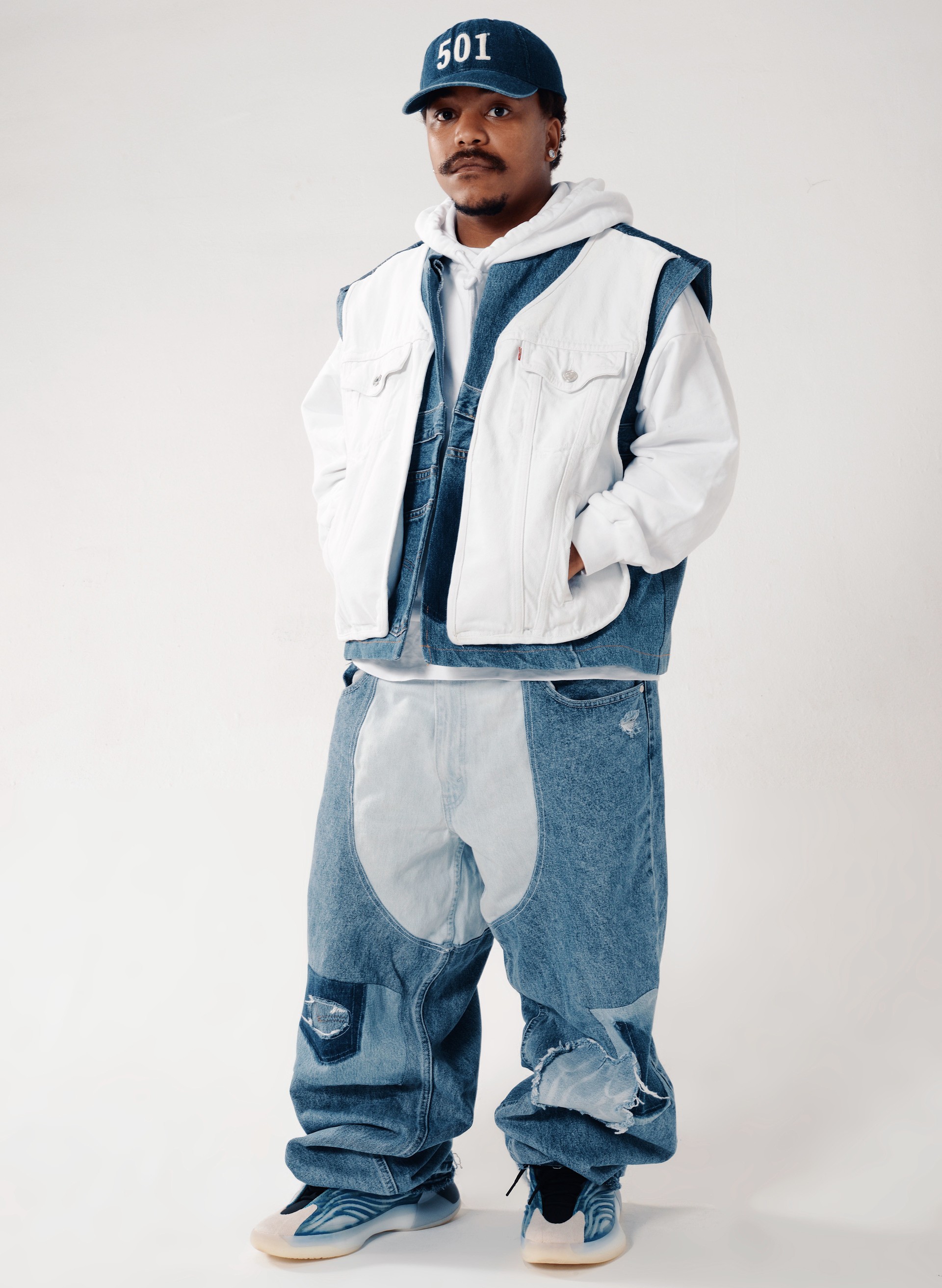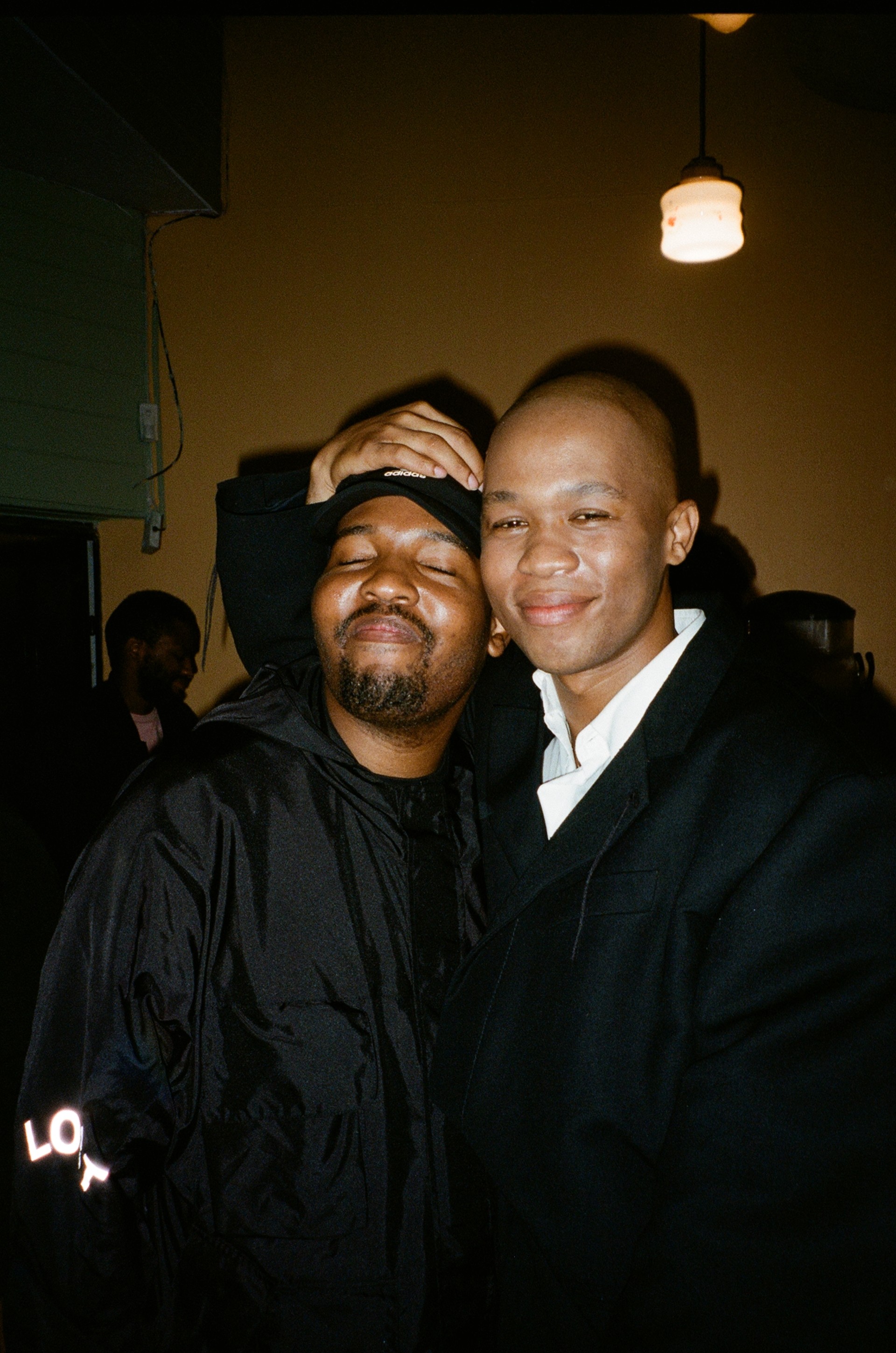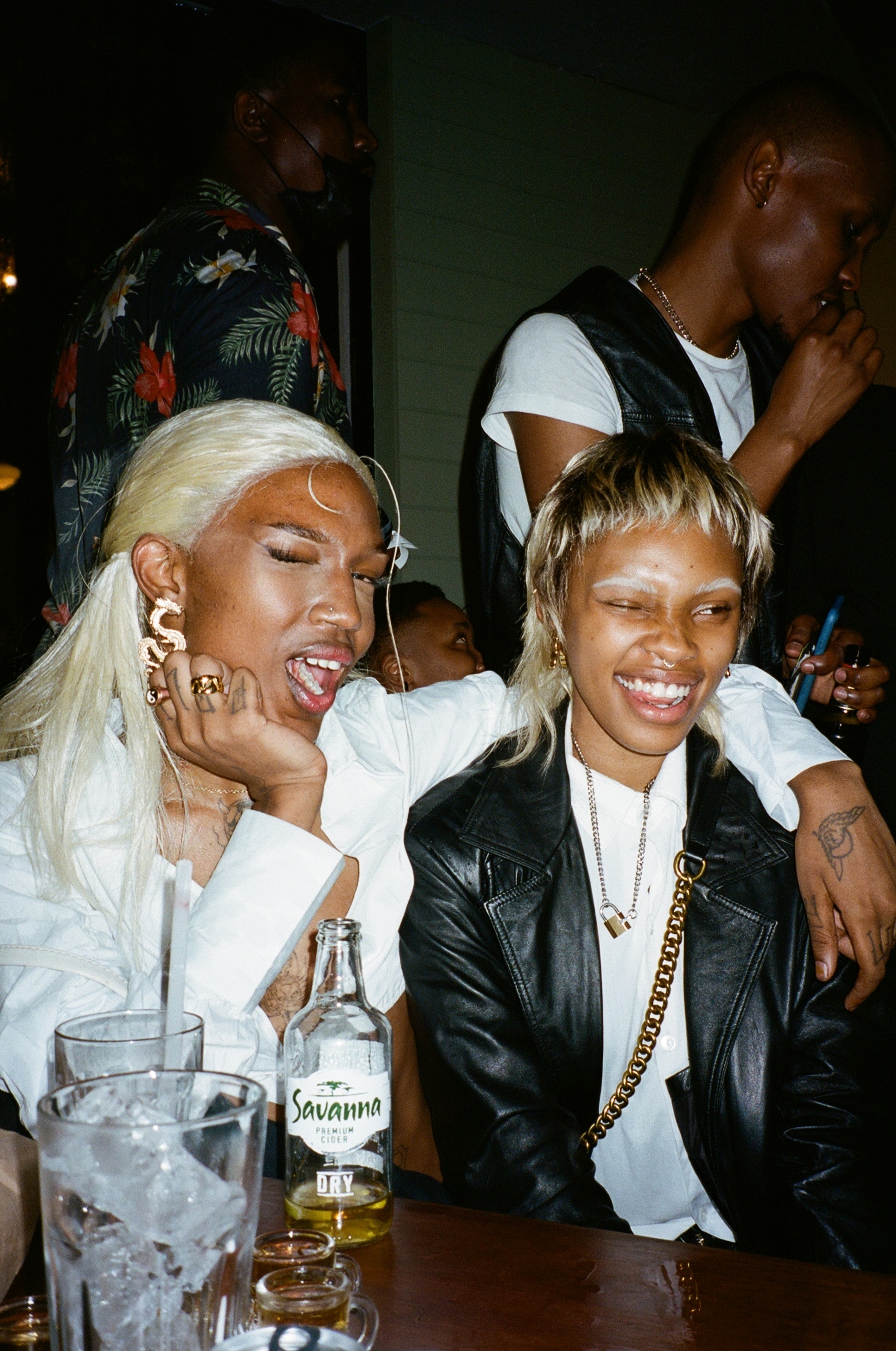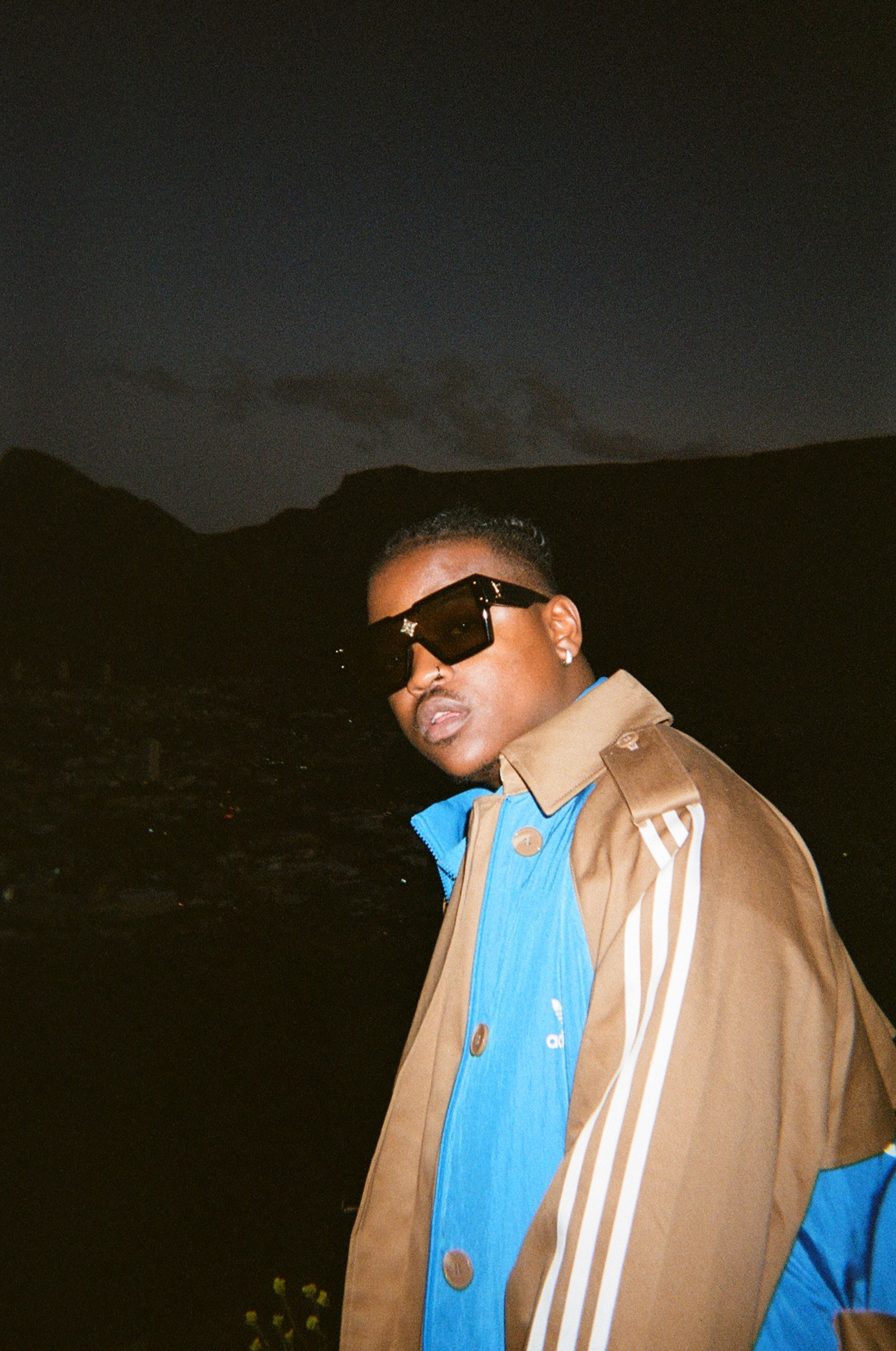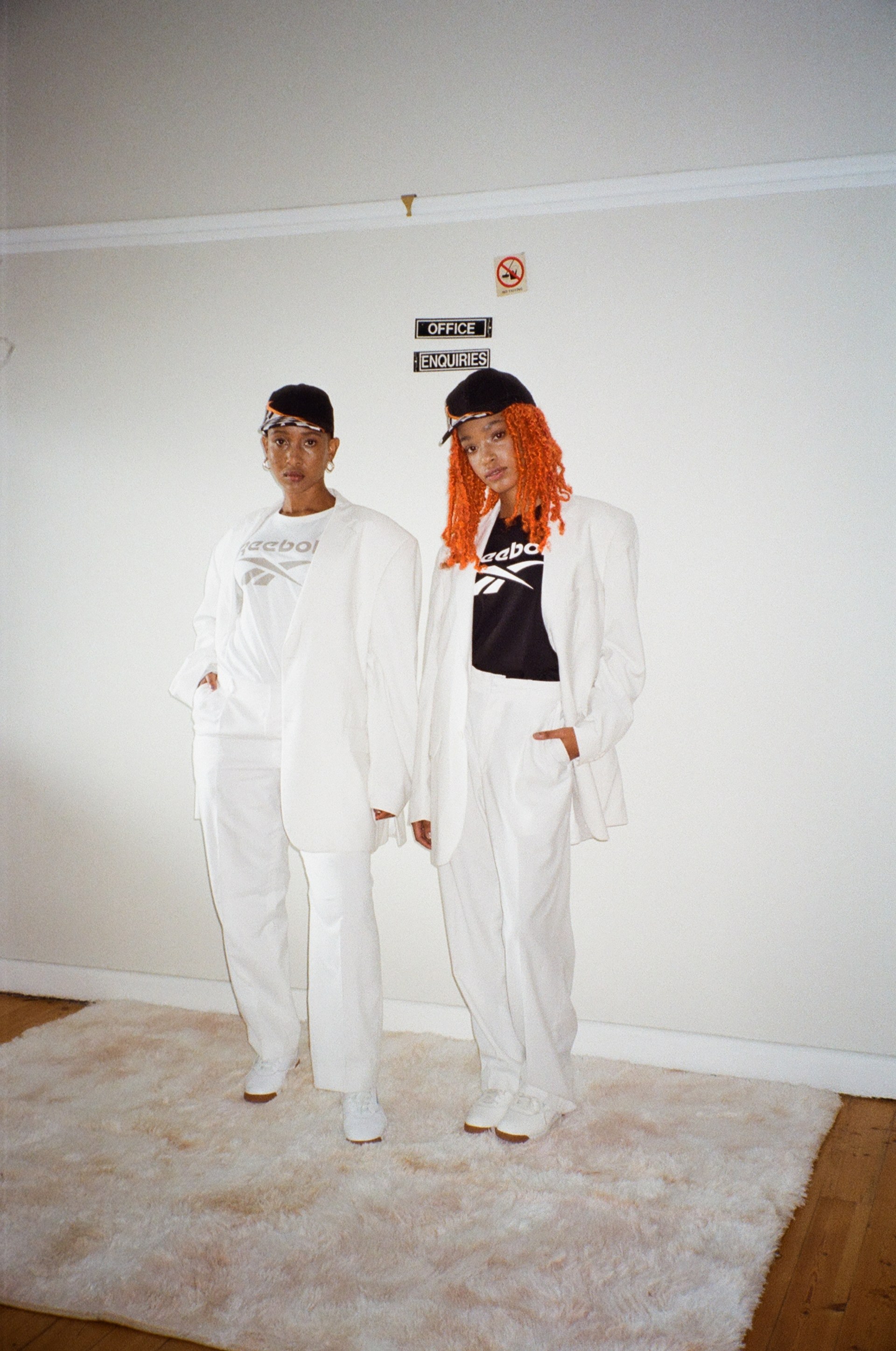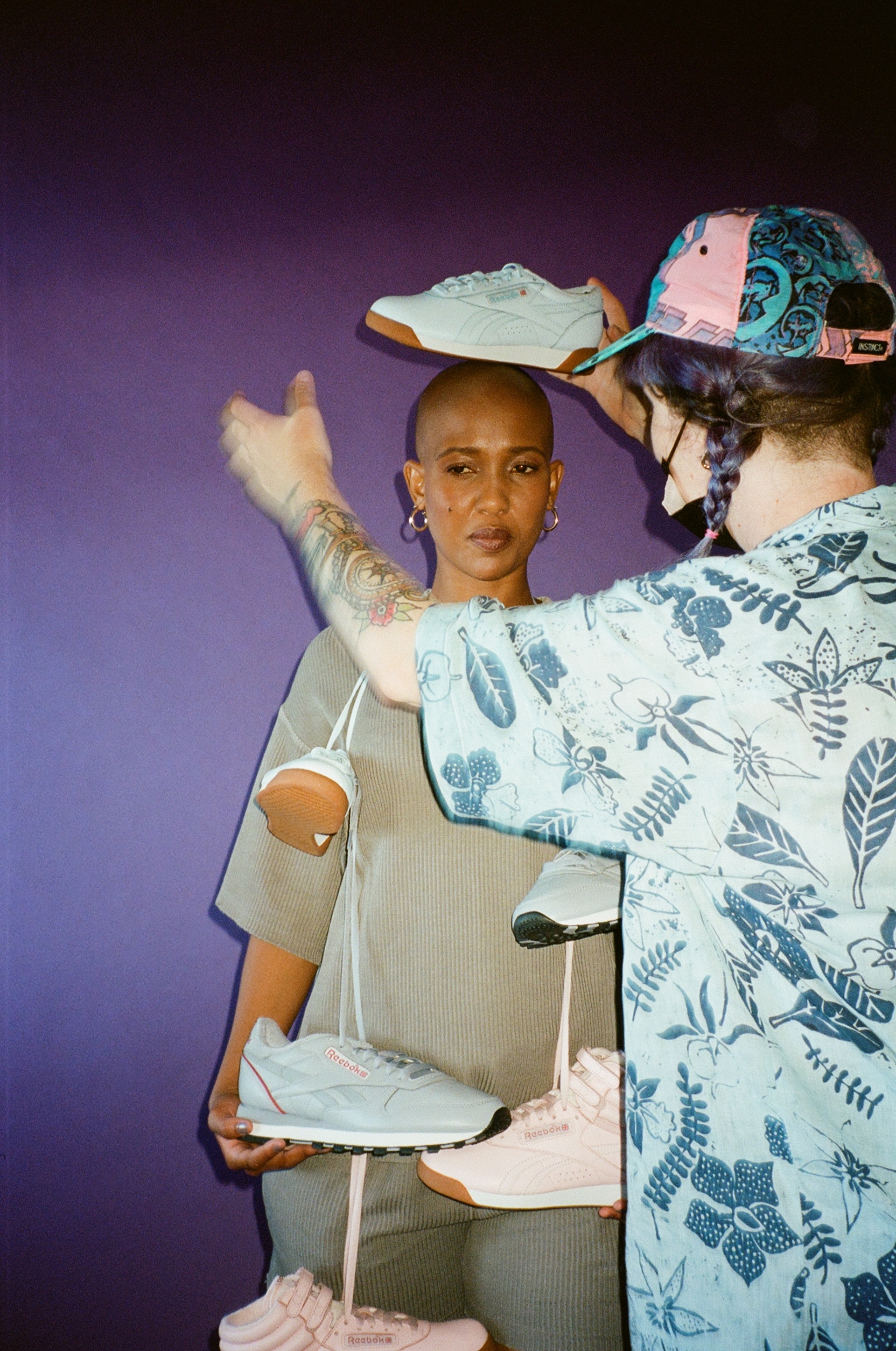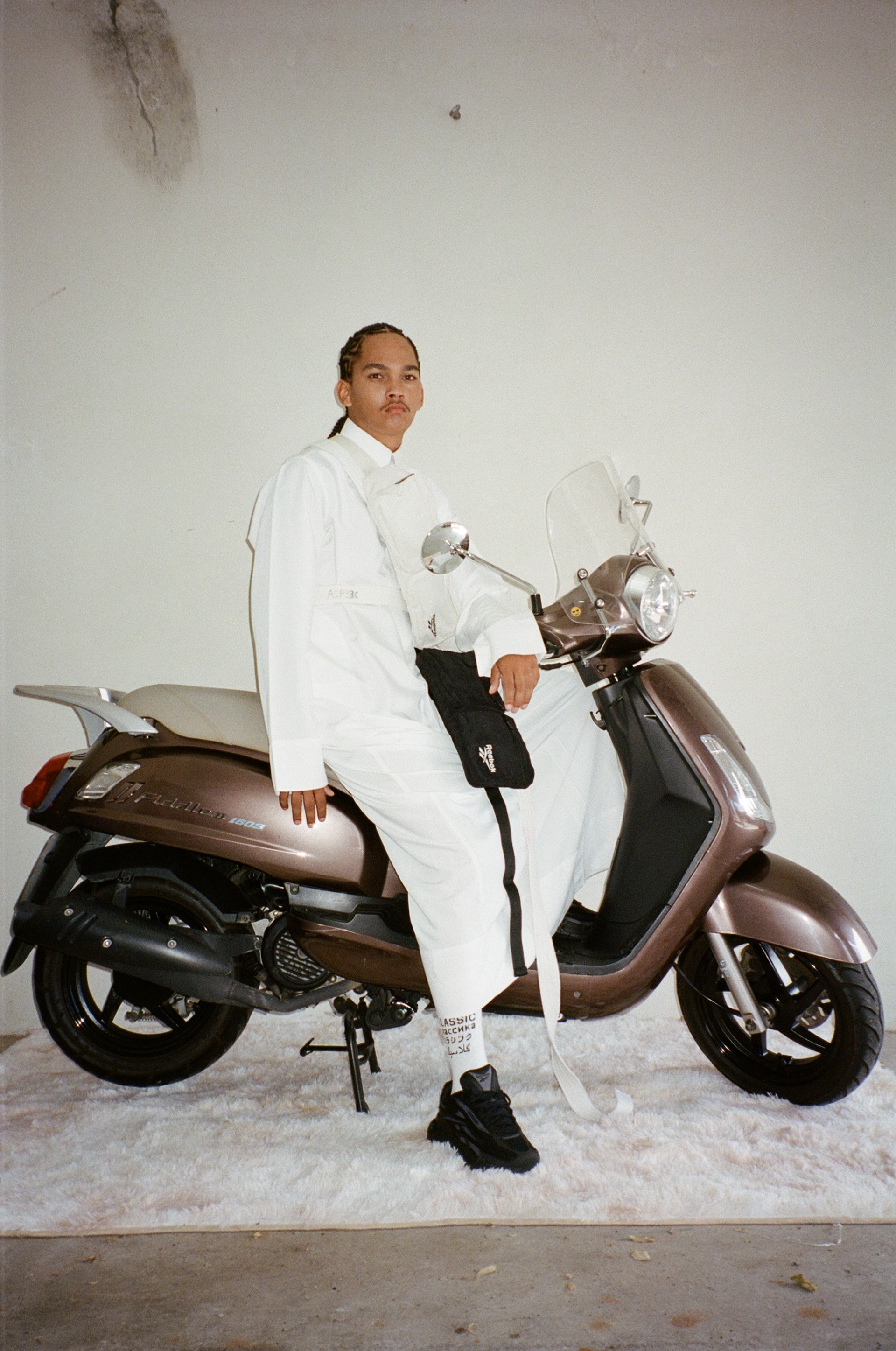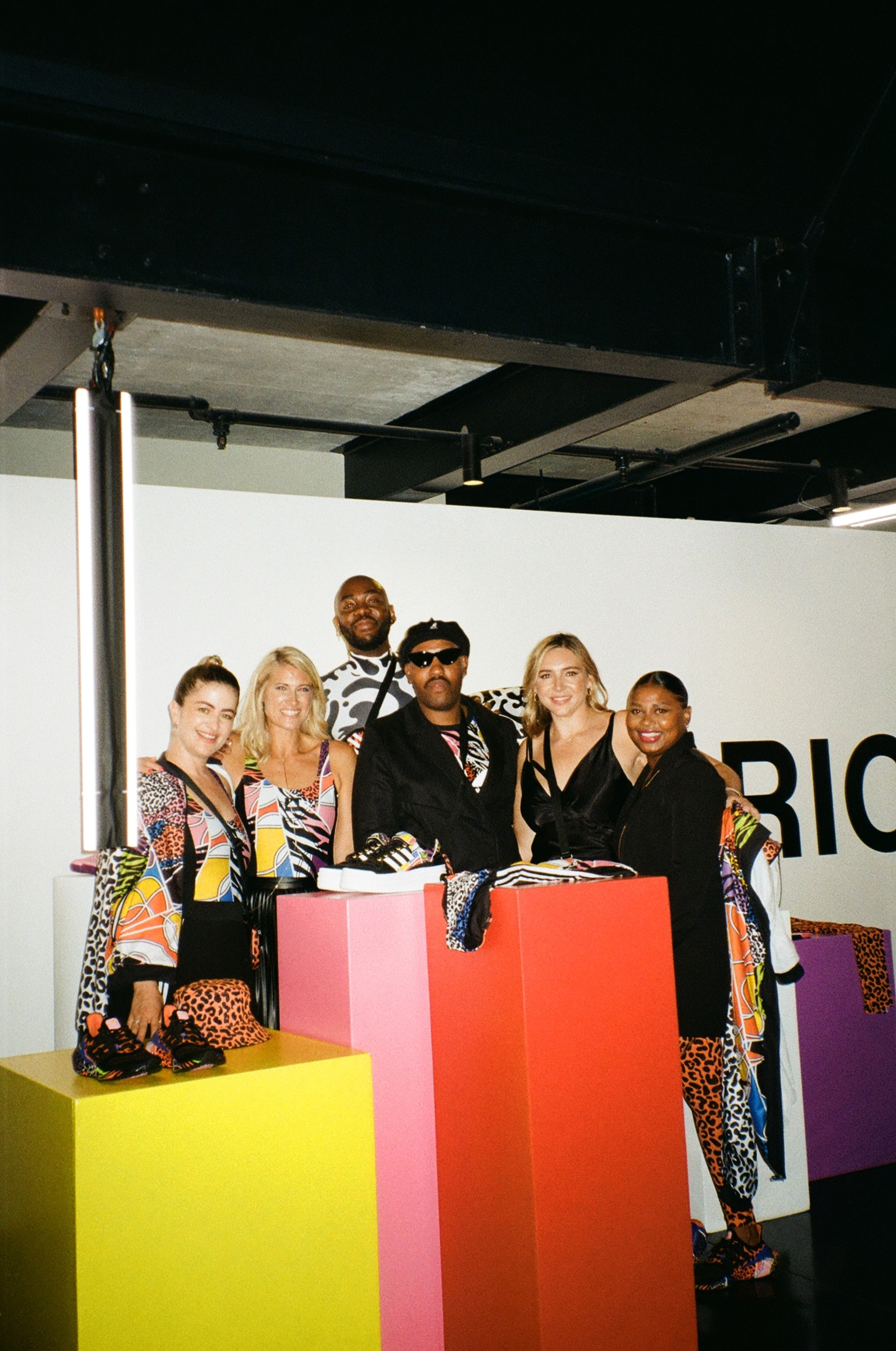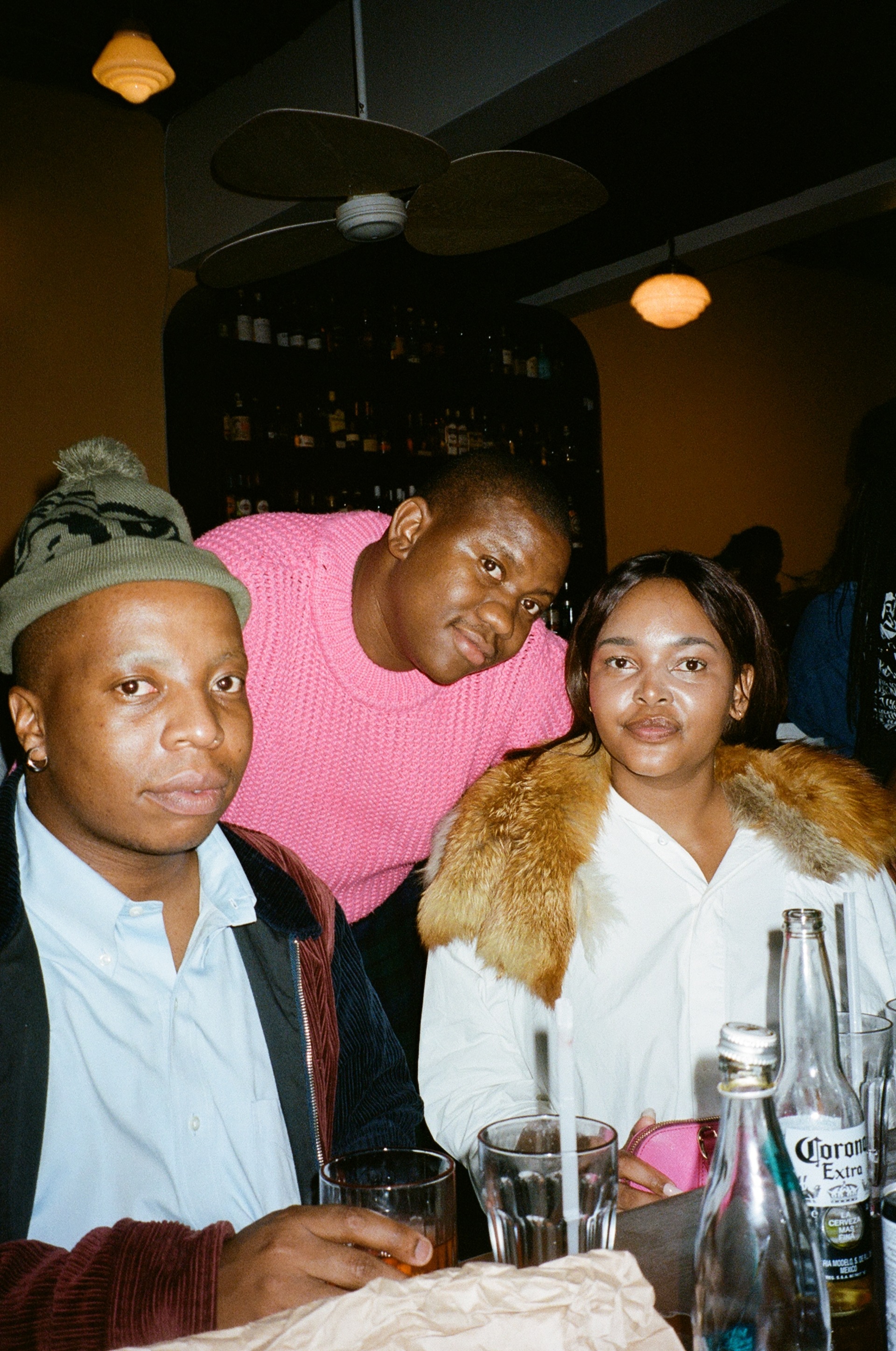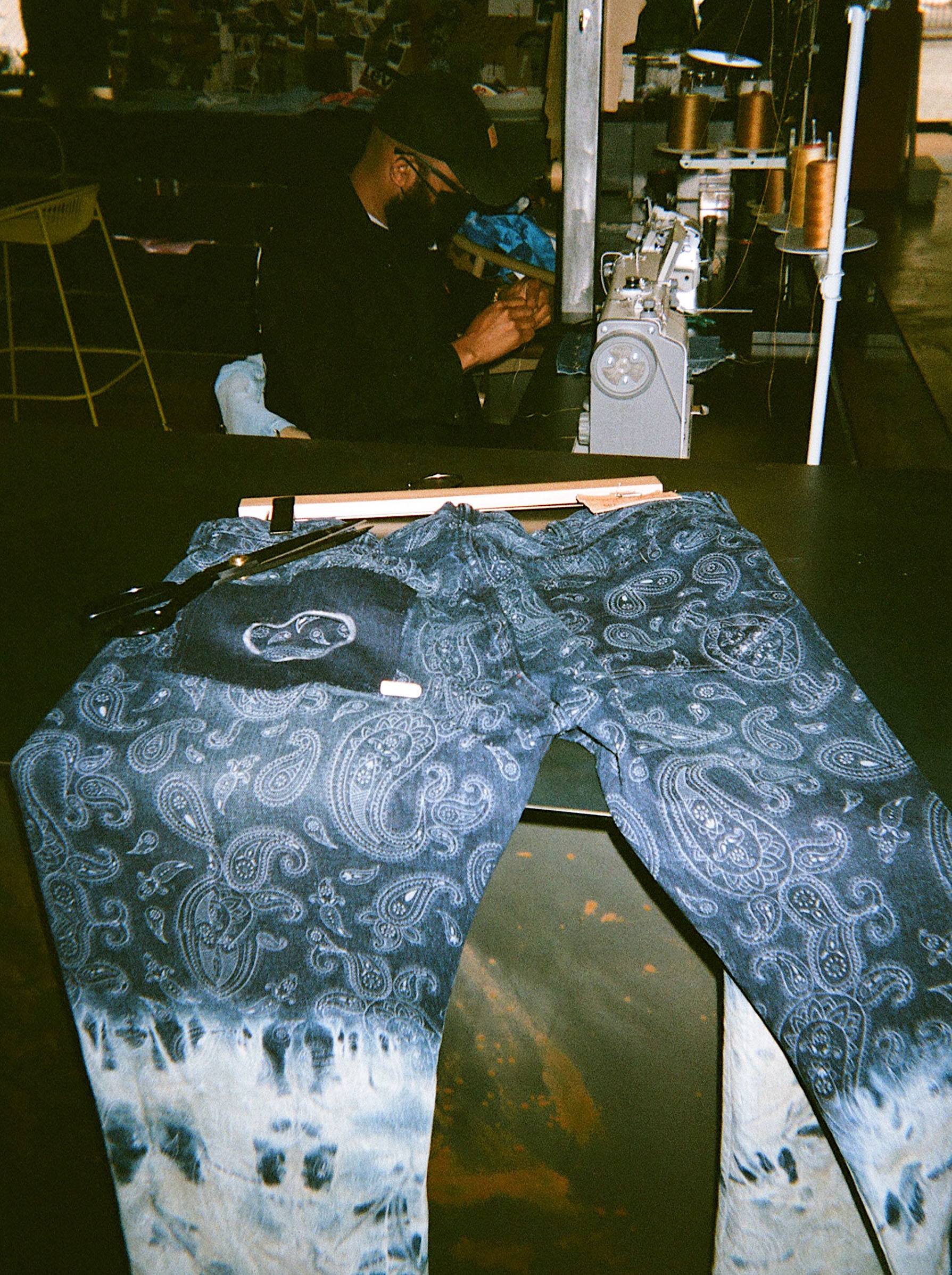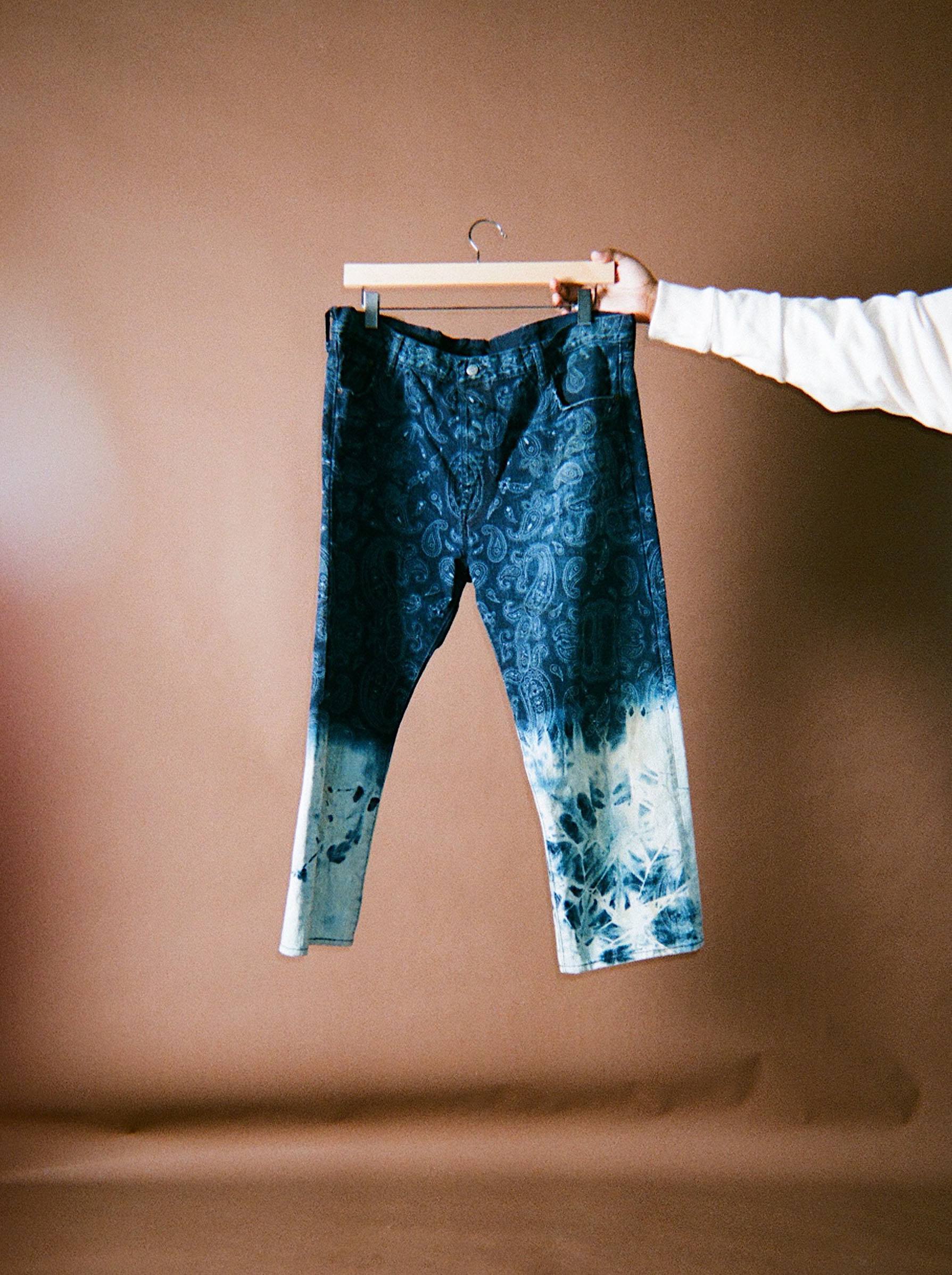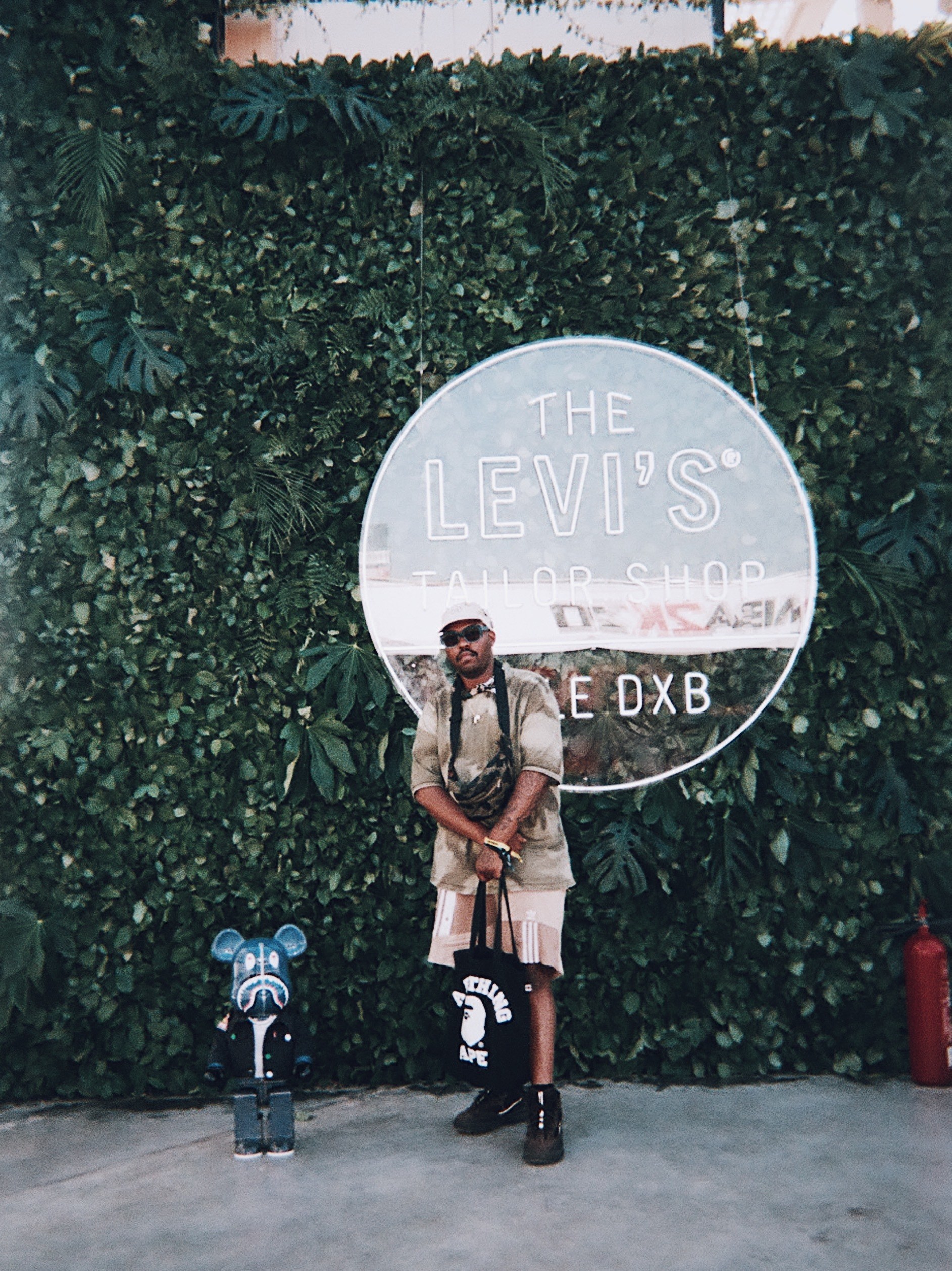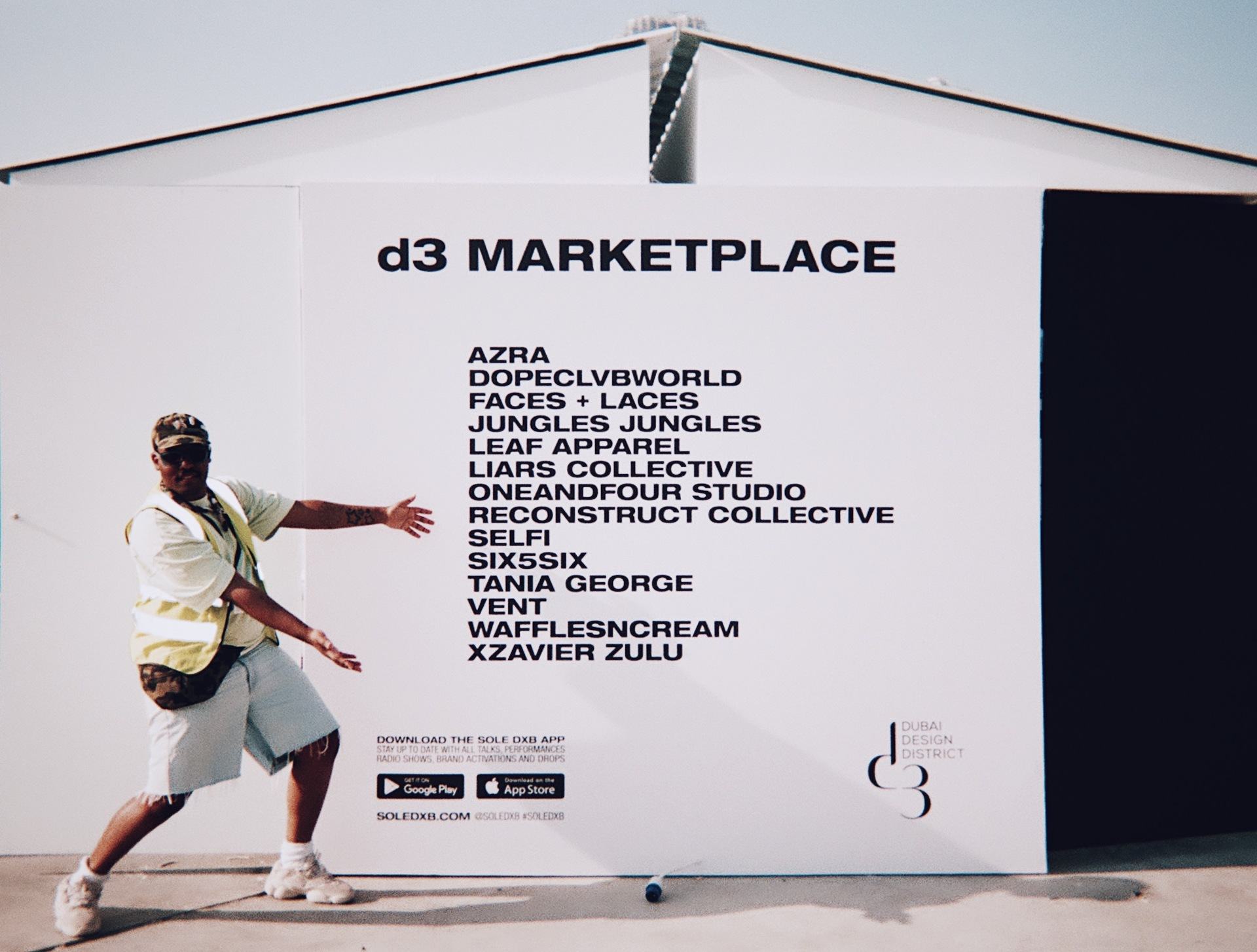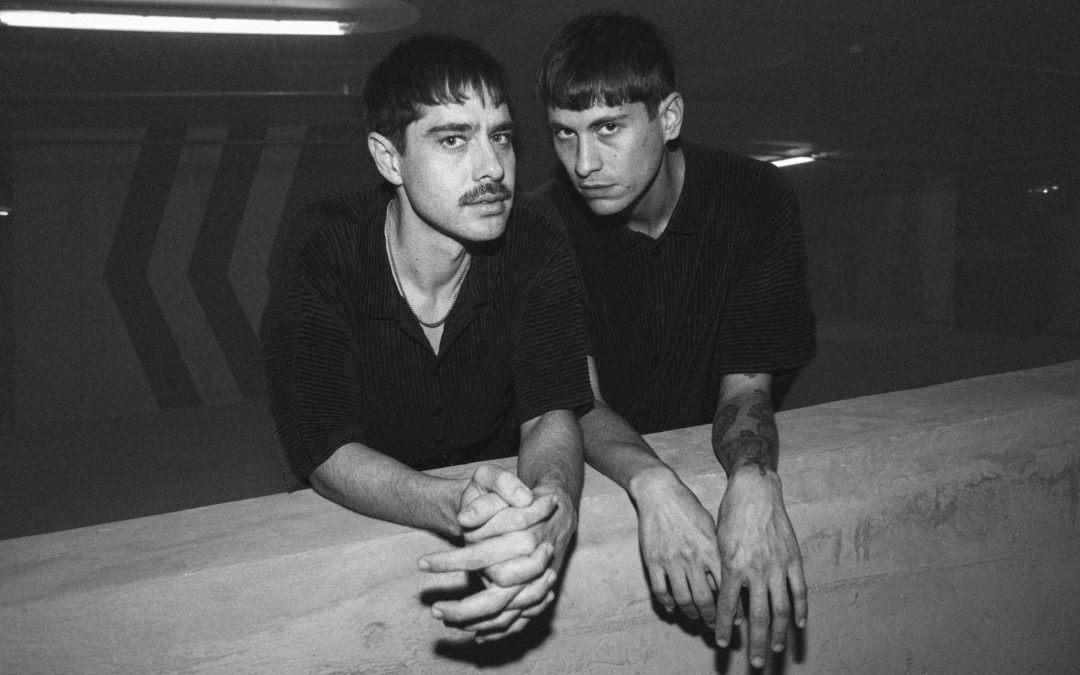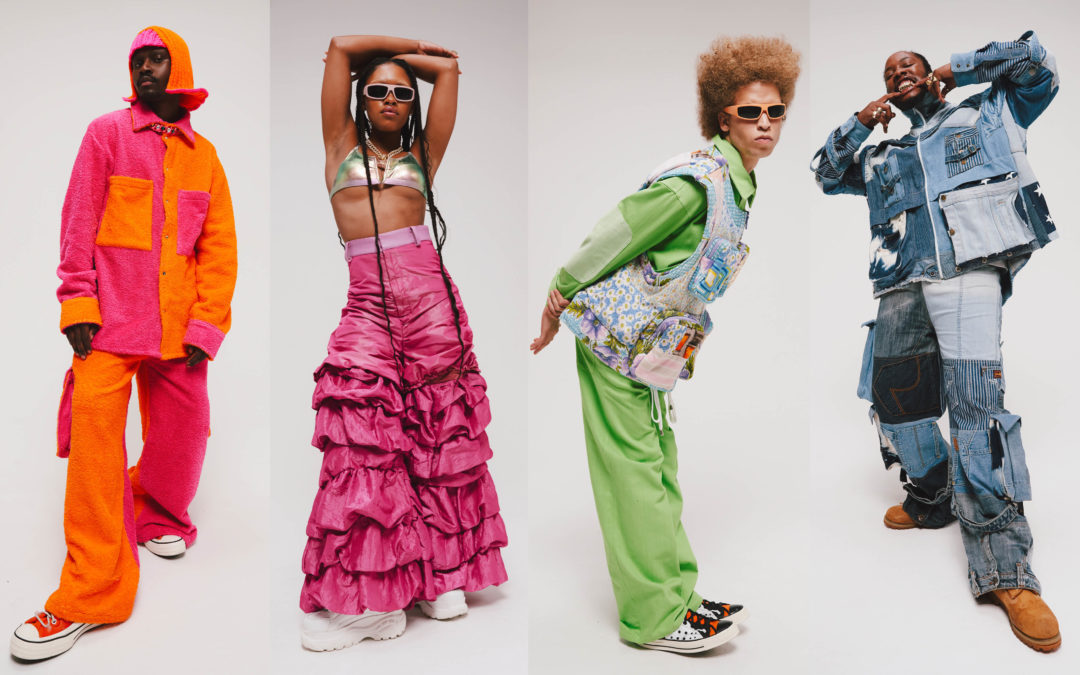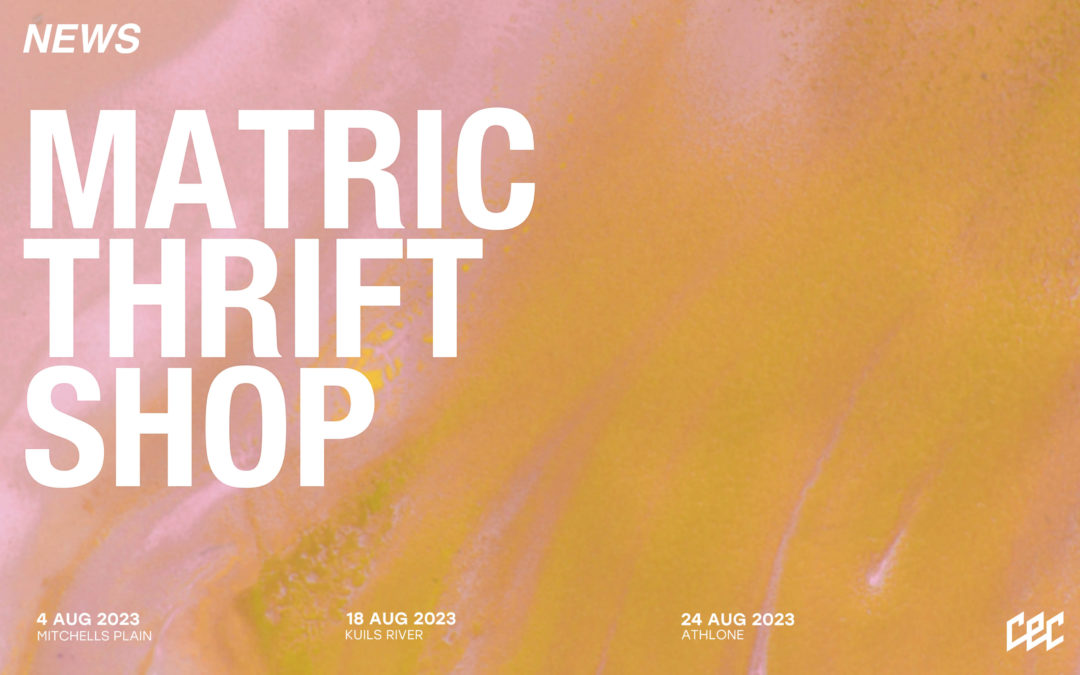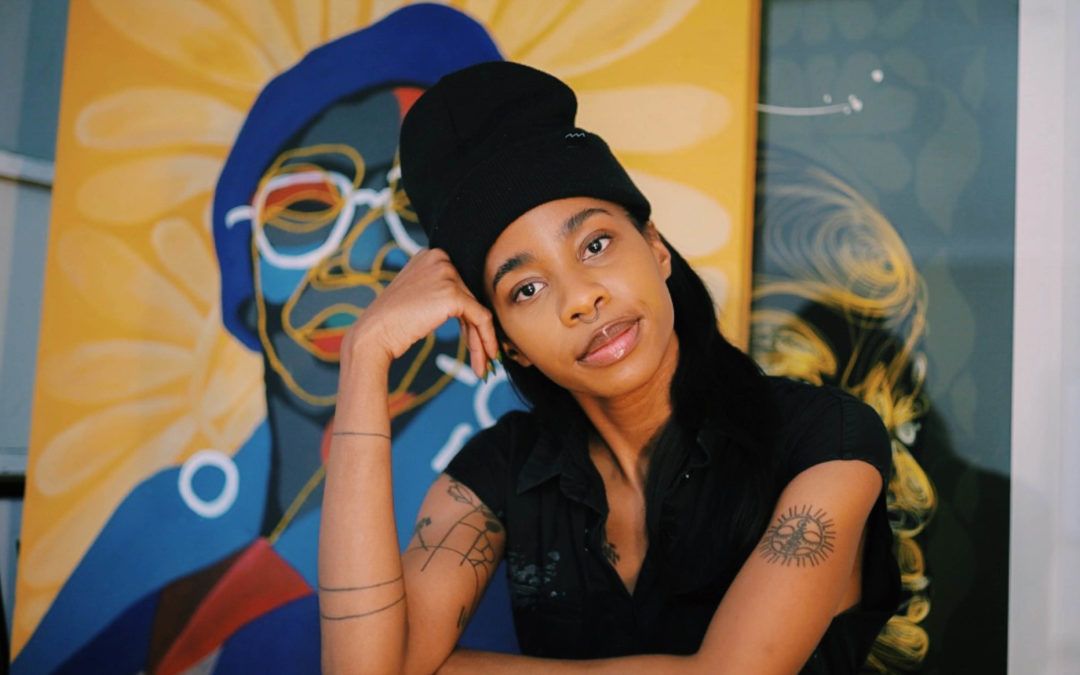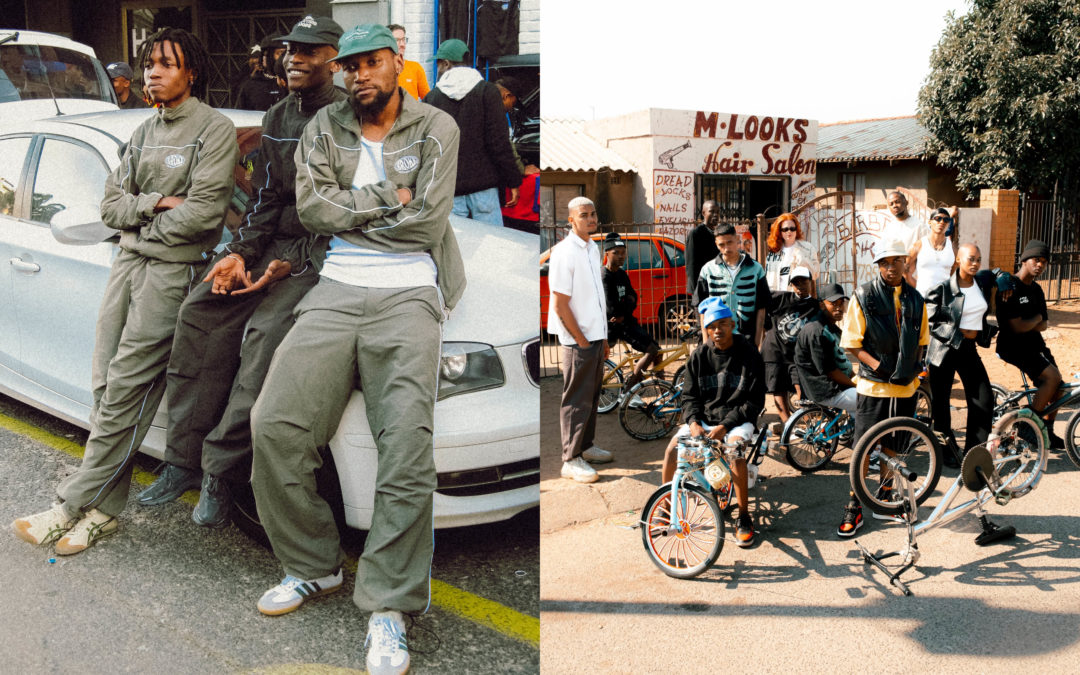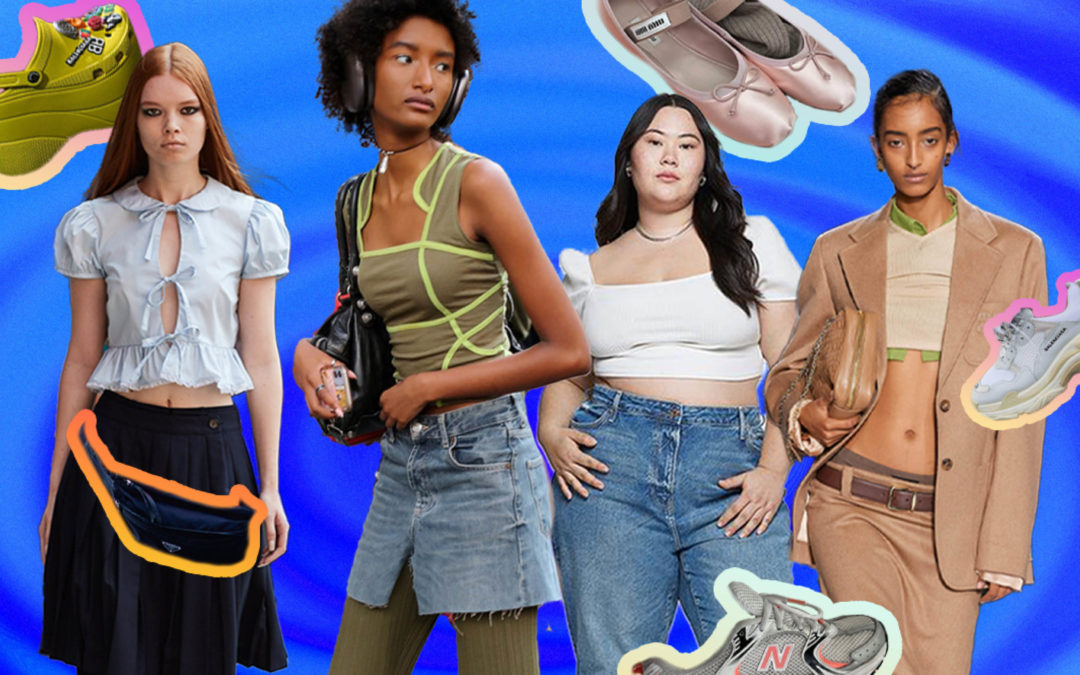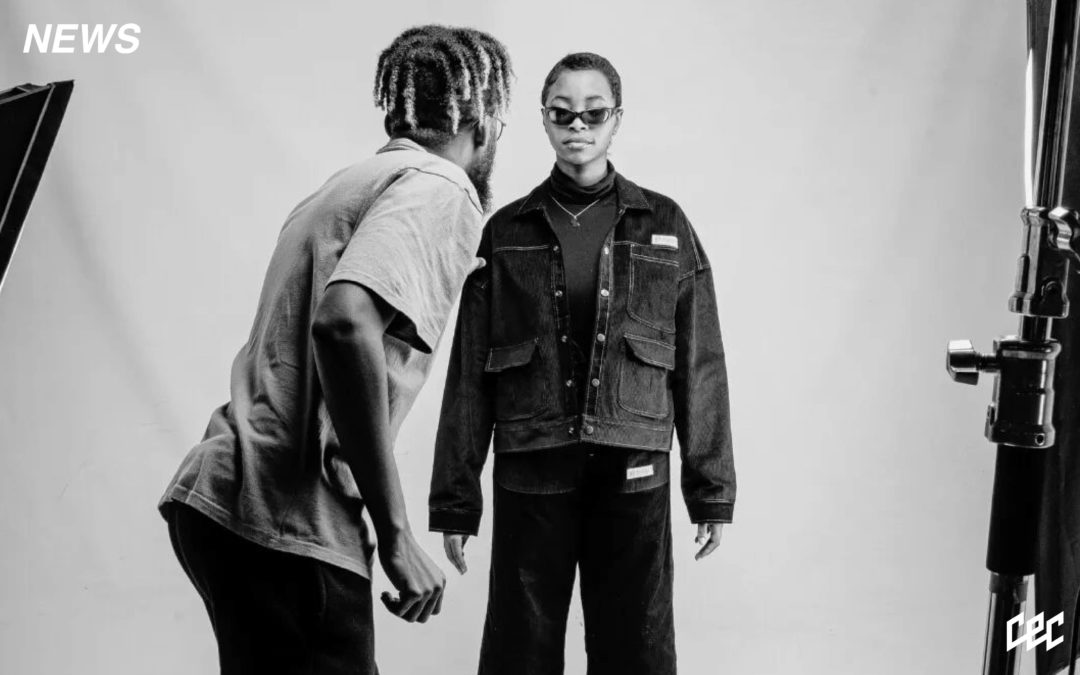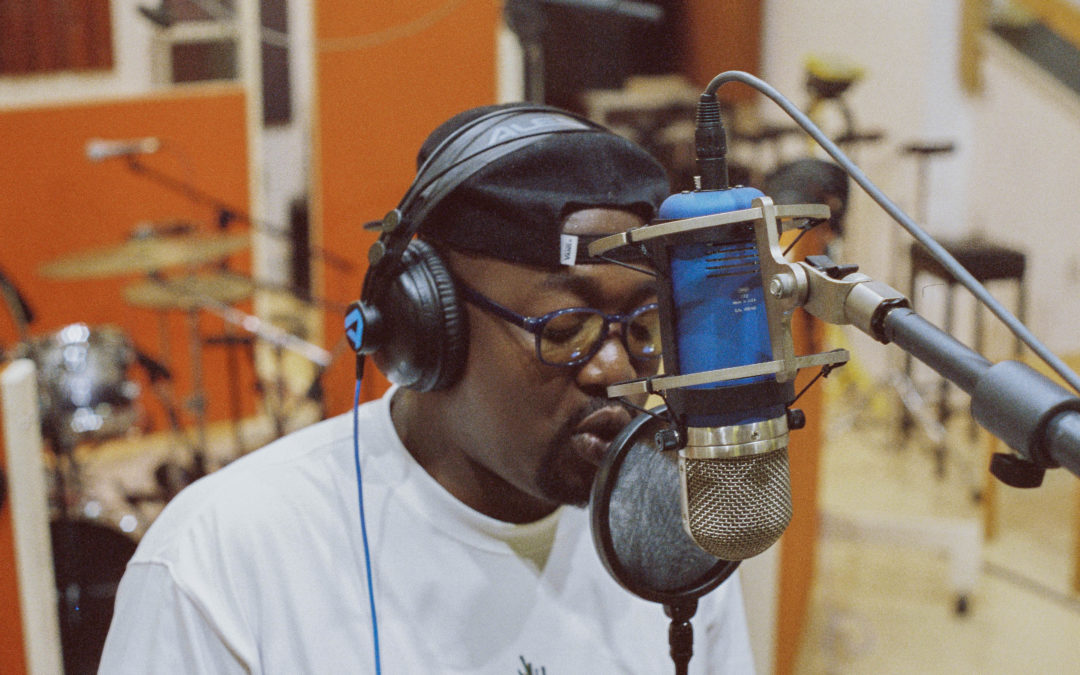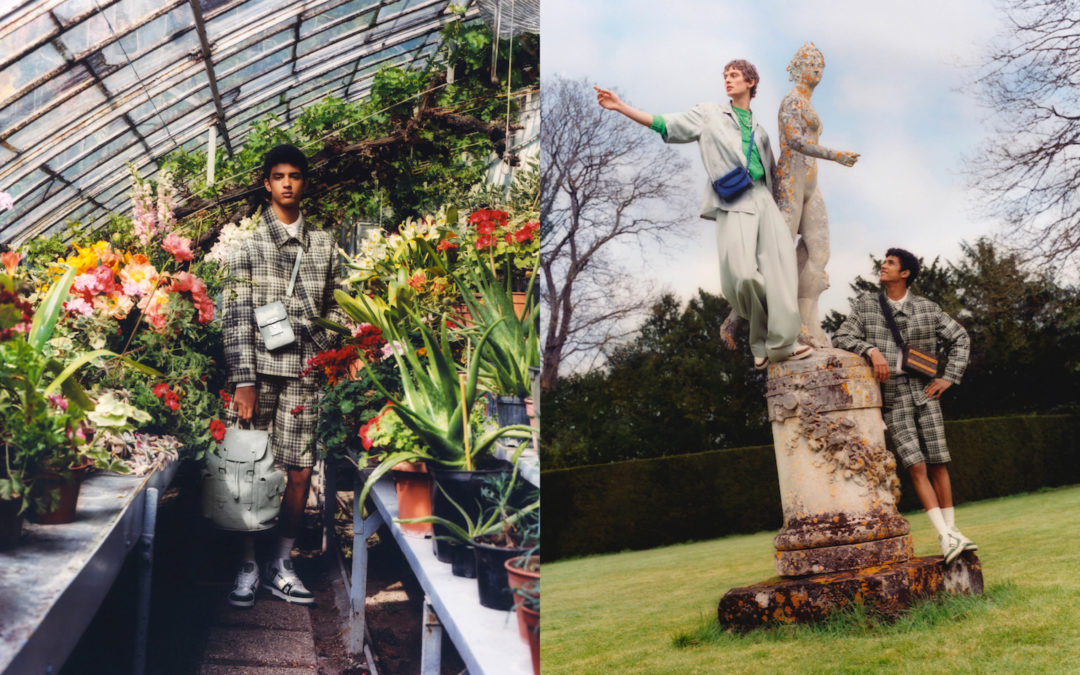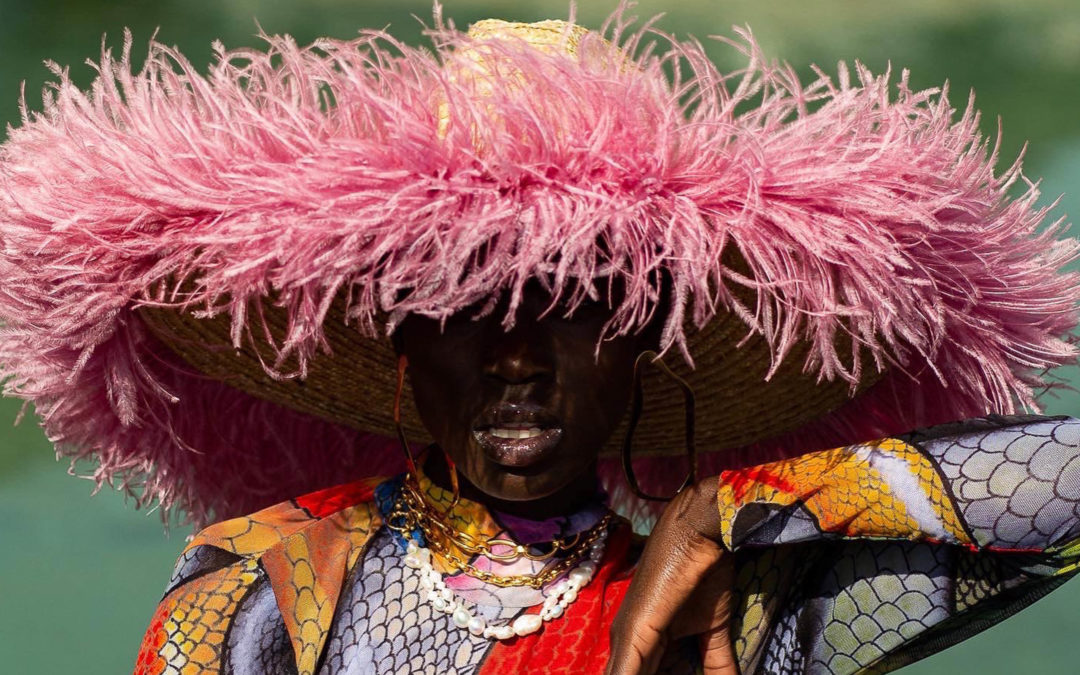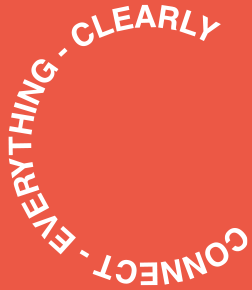I have a certain reverence for designers and creators who invoke the act of upcycling into their practice – and so, in many ways, Xzavier Zulu is that OG for me in South Africa. We have been fed this image of sustainability and environmentalism as existing on a “shades of beige” spectrum – corporate bohemian aesthetics – whitewashed and exclusive to one particular idea of what it means to be aligned to a purpose devoted to people & planetary wellbeing. Upcycling is very difficult to control within a single narrative – it is inherently fluid and requires a direct relationship between one’s skill and one’s vision – it is the punk pathway for garment construction, and it has no rules. One can train to perfectly draft patterns and replicate a garment accordingly, and this is exceptional in and of itself, but to view scraps, offcuts and existing garments as living beyond their passive state as “waste” and into something new and enhanced – well, this is a new frontier for fashion, I believe. We have passed the point of no return with regards to how much we lay to waste as a species, particularly in comparison to what we give back to the Earth. The energy exchange has not been equal for a very long time. It is with these sentiments that Xzavier continues to unlock new codes as a designer – all that makes up who he is and his experience, from streetwear to music, is the blueprint from which he re-designs and re-imagines the essential way in which we relate to our sartorial expression. This conversation speaks for itself, Xzavier is both an influential and discreet figure in South African fashion – a vanguard and visionary.
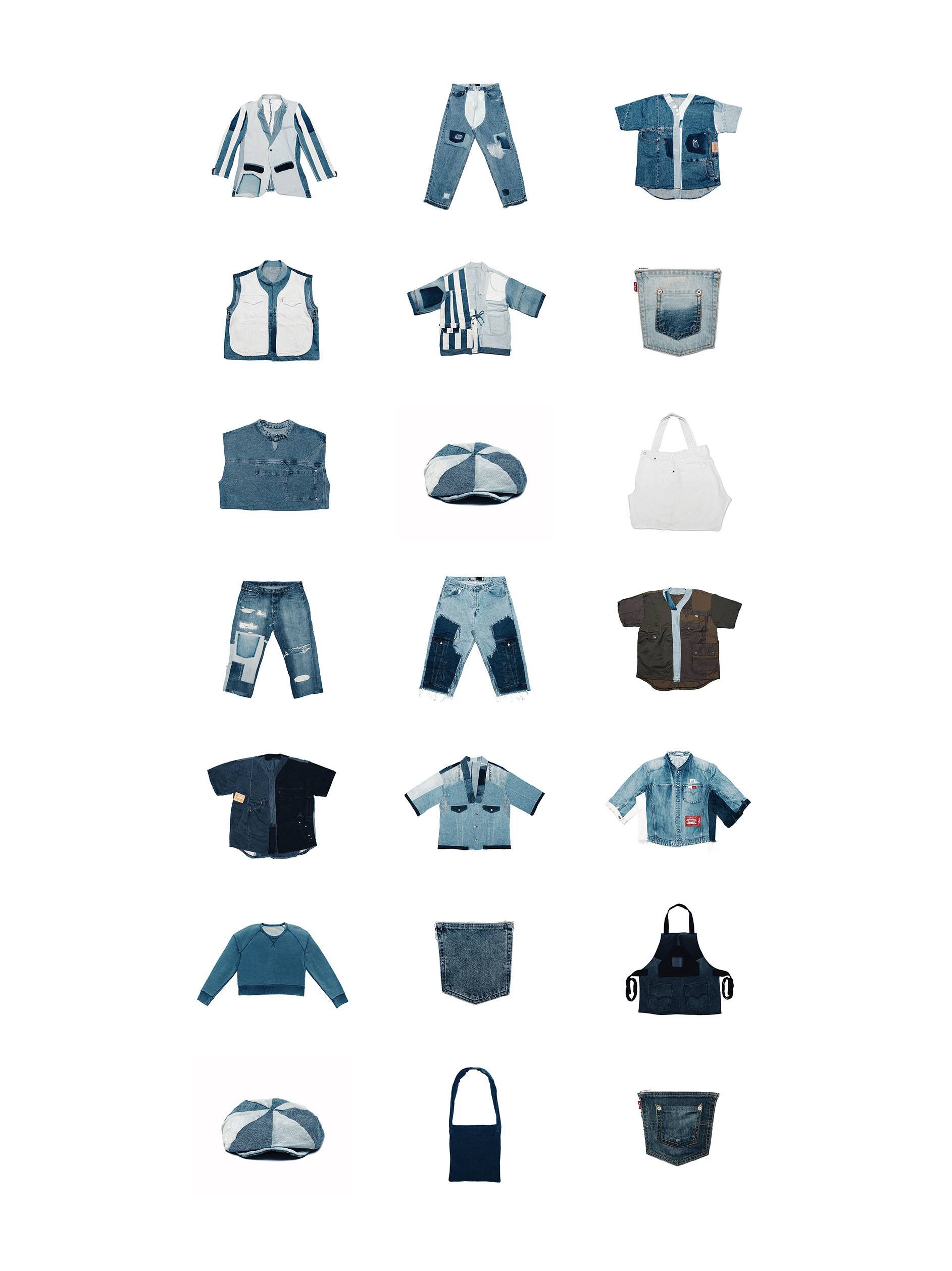
Upcycling as a practice seems to have really taken root in the last few years – being someone who has pioneered this in South Africa, when did you begin to see the value in textile surplus and re-imagined styles, and what are the possibilities that you envision through this practice?
Thank you for your acknowledgement of the work I’ve done over the 7 years, as it affirms that my practice, the voice and means of which I chose to speak to upcycling is my purpose; it’s not a buzzword, trend – it’s what I see to be my life’s work. Thrifting, fashion design – including co-design, and upcycling became practices I came to adopt as my voice through need, not having, not being able to afford a pair of Levi’s® jeans growing up through being introduced to the practice of thrifting by my brothers, The Sartists, coupled with the platforms and creators I look to as points of reference and inspiration opened my eyes to possibilities of a sustainable future through conscious consumption and development my own unique understanding of fashion design – and co-design.
You worked with denim initially alongside Levi’s – creating contrasting patchworks, and robes with panels among other pieces – and you have recently showcased a reworked tracksuit collection with Adidas Originals. What has the value been in diversifying your materiality, and is there a symbolism in these two textiles?
Denim is an incredibly democratic fabric, hence my continued use of it throughout my practice, as I’d always hoped that with the ongoing upcycling series, EVERYTHING IS A SAMPLE, people would develop their own relationship with the fabric but even more so have been conscious of the access to the fabric within their own inner-cities and environments.
It’s about everything being an eye-level conversation when creating.
That said, the “one-of-none” samples produced from the Daniëlle Cathari x Adidas Originals collection were a nod to the designer and the shared school of thinking we have when it comes to upcycling and repurposing as her collection was of that universe. I also wanted to take her collection further by bringing it into my own universe by upcycling a repurposing-inspired collection and as she’d highlighted classic Adidas Originals apparel silhouettes, I’d looked to produce a collection highlighting my own classic silhouette i.e. kimonos, balaclavas, face covers and bucket hats.
If I’m being truthful, I guess a part of me wants to also “flex” and let people also know that I can do denim, track-suiting, or whatever! I’m not “stuck” in denim but rather am growing my own understanding of storytelling, fashion design, production and purpose. Over the years, I’ve come to understand that my process is the symbolism; it’s the one thing that will always separate my items from others – even those that upcycle and repurpose in the same – if not similar, vein, and that regardless of the material(s) sourced the intent behind the series being beyond me is what I hoped people come to understand.
There is much to be said for the sustainability movement being corporately co-opted and whitewashed; as if neo-colonialism can somehow attempt to espouse inherently indigenous practices such as care for people and the planet. Can you talk a little about your perspective as preserver & curator of Black culture and sartorial expression, what are some of the considerations that need to be had for fashion in South Africa?
Oddly enough, when I’d first told my mother of my upcycling process and how my grandmother comes to me in my dreams she’d explained to me that as a child my grandmother used to make quilts from off-cuts she’d source from clothing factories to then sell in the Durban CBD.
I say that to say that, our ancestors, forefathers and communities have shared these sensibilities and practices for generations, and that’s why today it’s more important to me to ensure that yes, as the conversation on sustainability develops it’s imperative that it remains at an eye-level and not over-intellectualized – then excluding so many that could gain from being part of the conversation. From a fashion industry POV, it would be a miss to not make it clear that designers across the continent face layered challenges in regards to resources and accessibility that sustainable practices may not be possible as most are at mercy of their immediate environments.
I do believe it needs to be said that corporations although having not typically formed or run sustainably as a business model – or otherwise, are needing to lead the change to a sustainable future as they quite simply have the means to create the biggest changes whilst emerging brands are to hyper-localize their efforts – and preferably with the financial and infrastructural from government, institutions, etc. to sustain the change.
Your photographic archive, People Are Not Disposable, feels like a continual thread running through all your projects. Can you talk a bit about it – the importance of documenting, of honouring and archiving your experience?
I spend a lot of time alone, laughing at my own jokes and I guess always thinking over the relationships I have with others and myself, and with COVID having completely shifted our worlds – and to the amount of loss we’ve shared of those that we love, I think it became even more apparent to me to create more memories with my friends and family. That all we’ll have of them, and to still share. That’s what birthed the People Are Not Disposable series, the idea that as a people were needing to take better care of each other, well that, and the play on words as I began the series by capturing portraits on a disposable camera. Like I said, I laugh at my own jokes and thought the title was incredible and “smart” but the intent is pure.
The Sartists are a legacy – a decade long journey between you, Wanda Lepotho, Andile Buka and Kabelo Kungwane. What has this community-centric, collaborative binding of all your disciplines and intentions informed your own process in the last few years?
The Sartists are my brothers, my family. They’re the people I call upon to check on my mother, spend time with her over holidays… I couldn’t have asked for better people in my life. Andile Buka, Kabelo Kungwane and Wanda Lephoto play that role in my life – and I in theirs, long before we talk about collaboration and the work we’ve done together throughout the years.
Ironically, over the years we haven’t necessarily collaborated as we have before as the Sartists as compared to the “golden years” of pre-2018 but since have developed our individual characters and forms of story-telling, our voices and communities though when I think about it all we’ve done so by pulling from the initial intent of The Sartists; so whether it be Wanda Lephoto forming his namesake fashion label, or Kabelo Kungwane forming his football-focused community, Kasi Flavour, or Andile Buka documenting the life and times South Africans it all rests upon story-telling.
Today, as Xzavier Zulu, I have developed my own voice and it’s informed by the years behind me in forming communities, working with some of the biggest brands in the world, developing my own voice, character and story – especially outside of The Sartists. That said, instilling the importance of story-telling through everything I create has been the greatest gift they’ve given me; today that’s become my purpose.
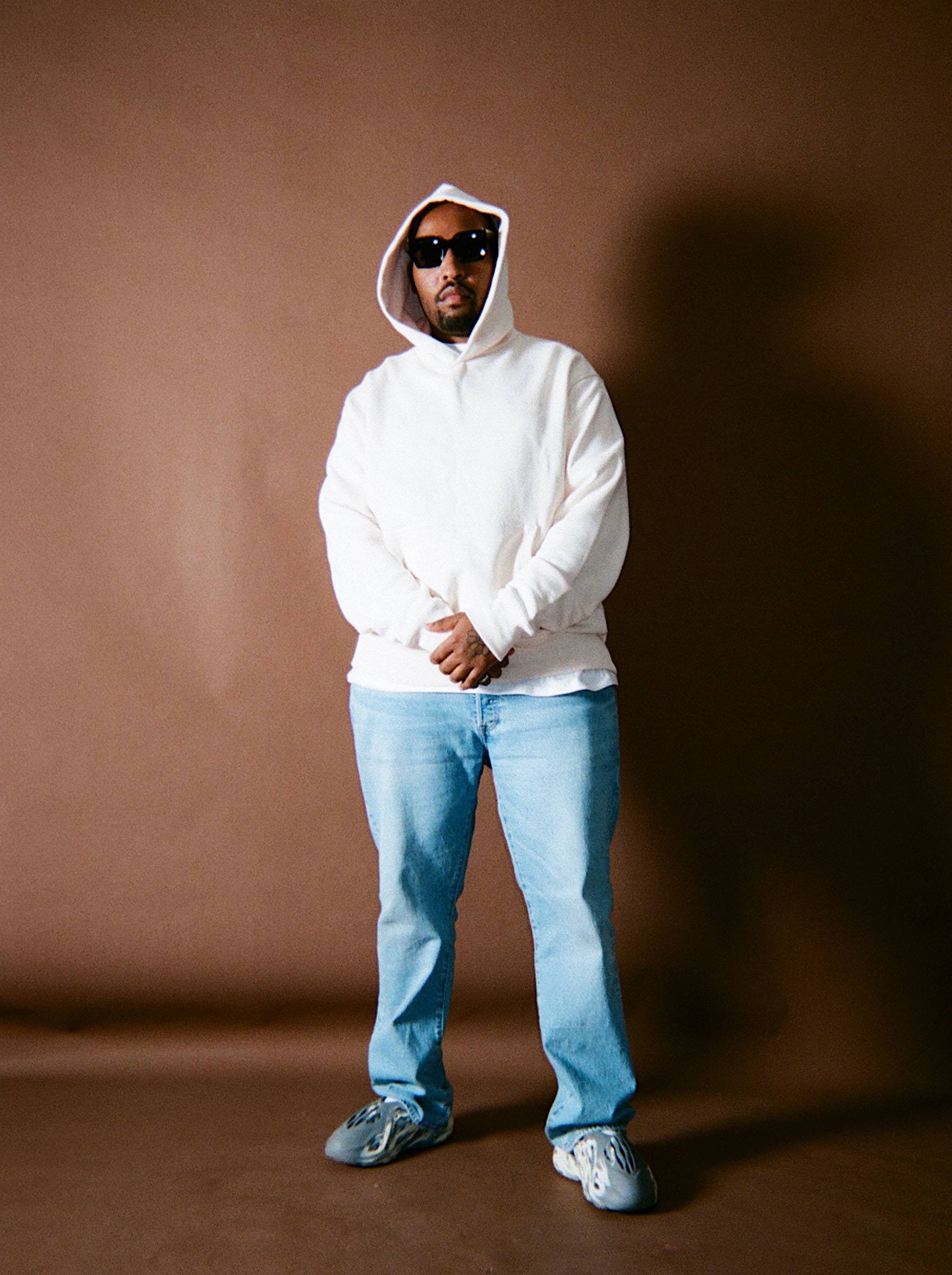
What is 2022 looking and feeling like for you?
I won’t lie, it’s going to be quite an intense year and thus far I’ve definitely felt quite overwhelmed at times but now I’m incredibly grateful for all the opportunities ahead of me, and the time I hope I have to still spend with friends and family.
I’m looking to be as present as possible for it all.
The biggest shift in my life is that I’m set to relocate to Germany in June having recently been appointed to a role at Adidas headquarters as their HYPE Originals Go-To-Market Planner Manager. This serves as an incredible opportunity to grow in my career, and more than anything I’m grateful that the work done locally to develop the community – and some of the milestones still to come, that I have through my previous Entertainment and Influencer Specialist role at Adidas South Africa has been seen and acknowledged.
Coming off the back of being one of the finalists for the 2021 twyg Sustainable Fashion Awards, my collaborator, Matthew Edwards, and I have been selected as part of this year’s Design Future Lab, alongside an incredible list of artists, designers and creative technologists as the initial looks to explore the intersection of fashion and XR. A blessing really! All in all, I’m grateful and want to make the most of the time I still have in South Africa.


